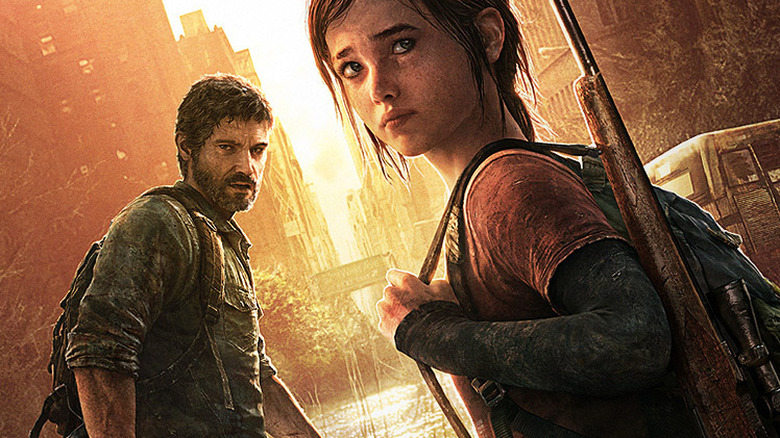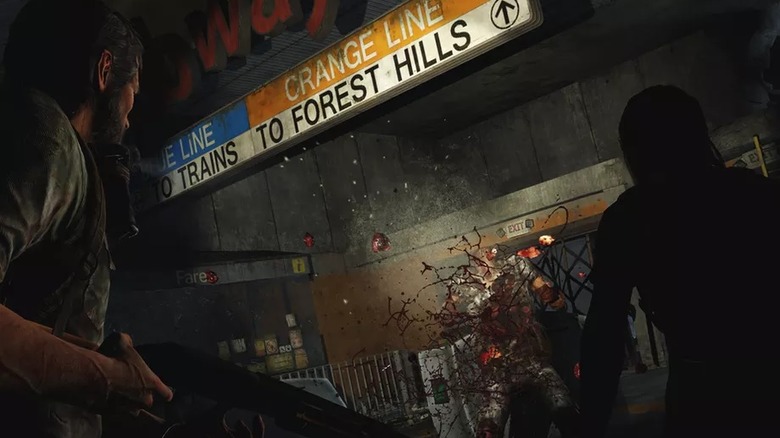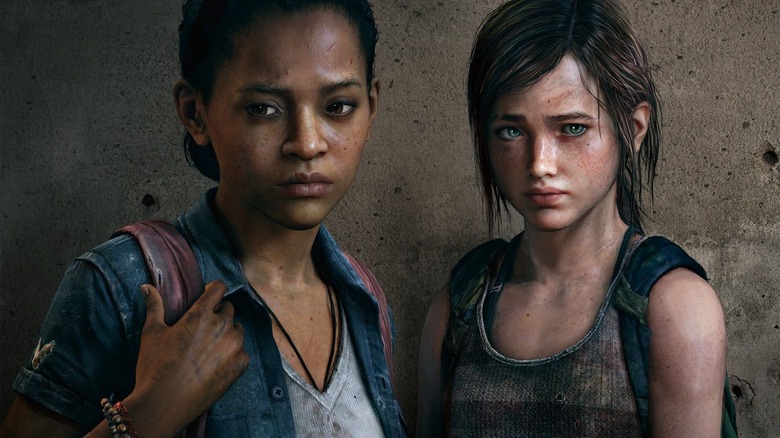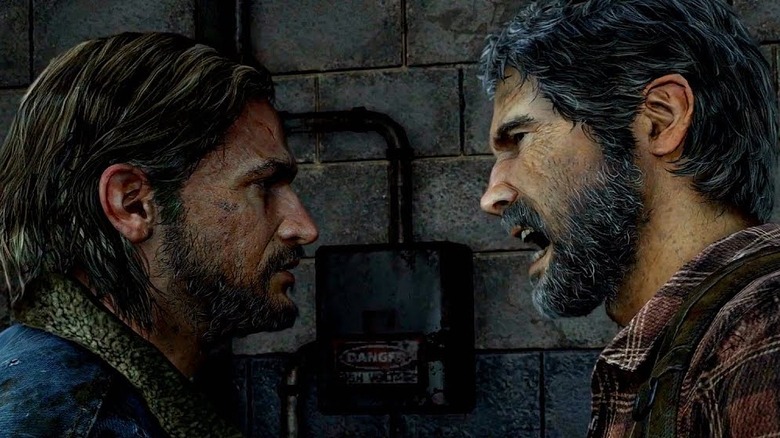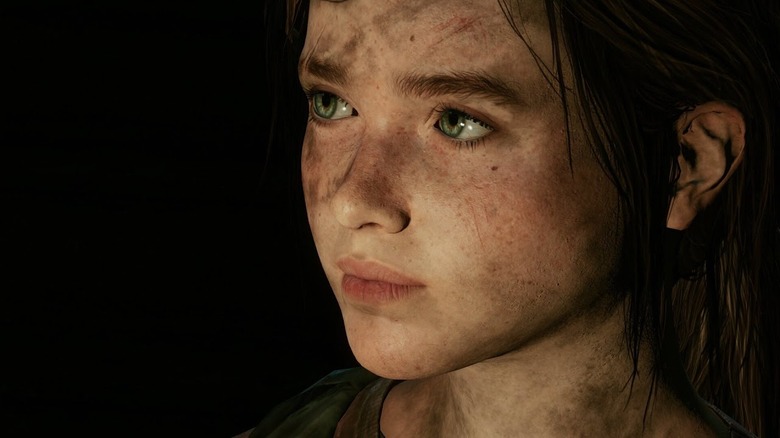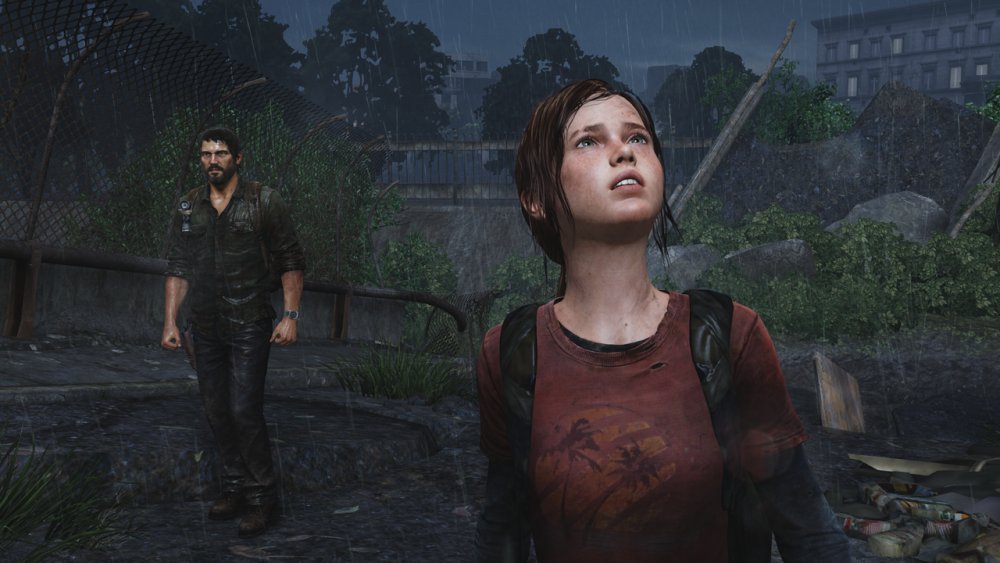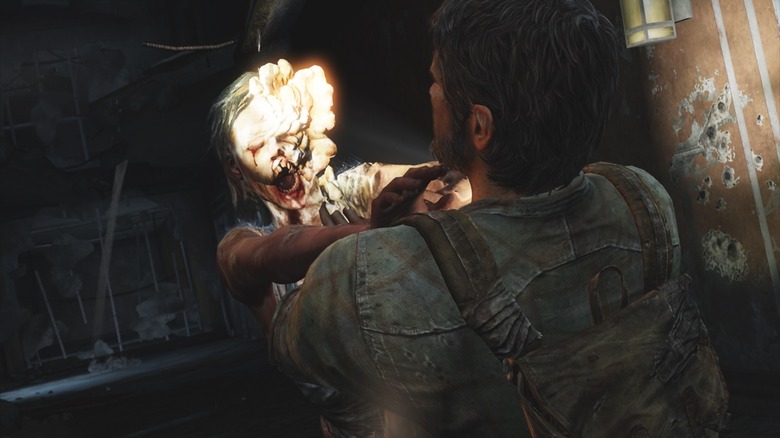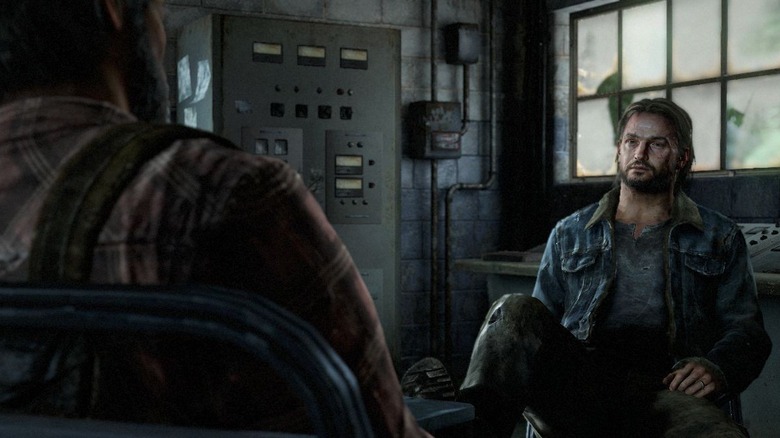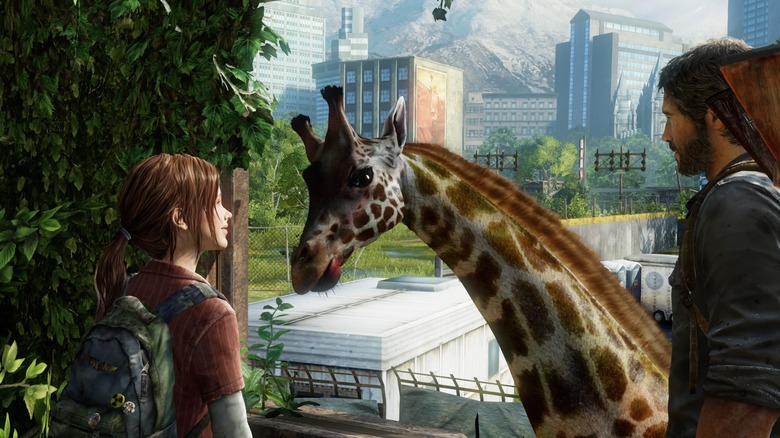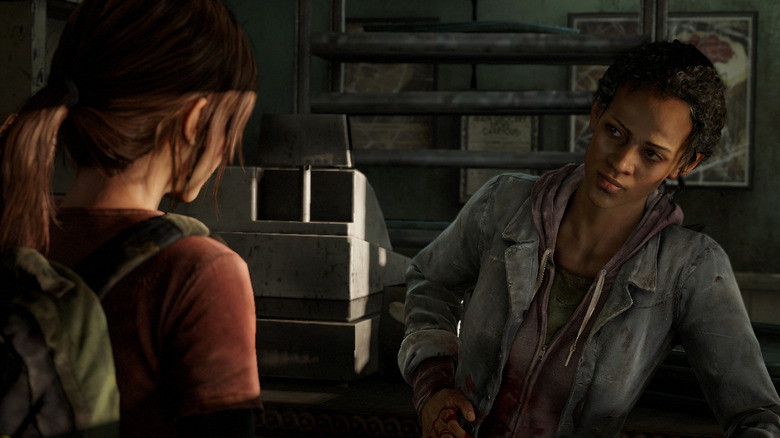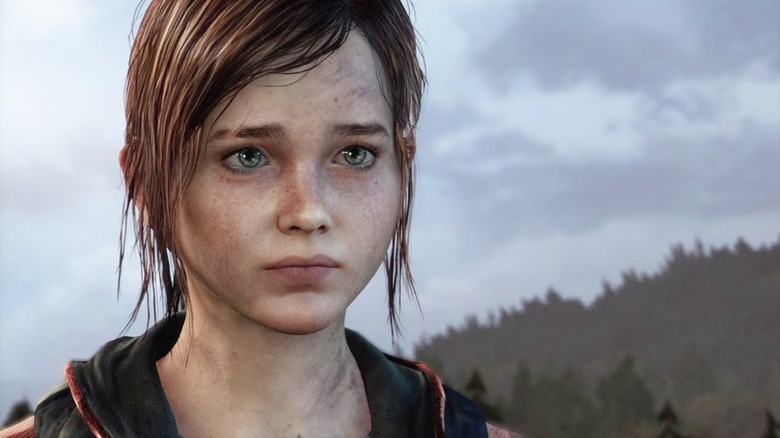The Biggest Unanswered Questions About The Last Of Us
Part of the beauty of Naughty Dog's The Last of Us is that it's a very linear narrative — Left Behind's mild flashback notwithstanding — told in a nuanced way you don't always see on this level of production outside Naughty Dog's games. It's a style that rightfully made the studio one of the most respected developers on the planet, but it's a style that, let's face it, still leaves a few tiny things to be desired.
With The Last of Us Part 2 around the corner, ready to jump us forward into a whole new phase of Joel and Ellie's lives in the post-mushroom zombie apocalypse, there's still a few lingering questions worth asking about where they've been thus far. Some small, some huge, and yet, they're still questions that can't help but swirl around players' heads as the credits rolled the first time around.
Naturally, it must be said, here there be spoilers.
How did Joel end up in Boston, anyway?
It tends to be forgotten in one of the most harrowing and heartbreaking intro sequences to a video game ever crafted, but lest anybody need reminding: when The Last of Us starts, Joel and Sarah live in Texas, a little ways outside of Austin. The story then jumps ahead 20 years, and Joel has now settled into a life — such as it is — near Boston.
Granted, a lot happens in 20 years to anybody. But as we see in the course of the game itself, making a cross-country journey is essentially a death march. Even in the early days of the infection, it's doubtful Joel would've had reason or even opportunity to board a plane — if you think the TSA is a pain now, imagine what it's like during a killer fungal outbreak — and Austin to Boston is a three-day trip by any other means. What reason would Joel have to head up north, and how did he make the journey, as perilous as it would've been? There's one hell of a story there worth exploring, especially given that Joel's history with his brother suggests it was all less than savory.
How did Riley eventually die?
When The Last of Us: Left Behind ends, we know pretty much everything we need to know about Ellie and Riley's relationship, and where that touching bit about what to do when the end is coming from the last moments of the game truly comes from. What we don't get, however, is the finality of knowing exactly when and how Riley went out.
Yes, Riley was bitten, but she's still a long, sad ways away from going full Mushroom Kingdom, to say nothing of the fact that the Fireflies would've had questions as to why one of their younger members went missing. Does Ellie ever even get to tell them what happened? Still, beyond that, the vibe is that Riley went slowly, peacefully, and Ellie would've had to do the painful and inevitable. But the way she uses Riley's words in the ending suggests maybe it wasn't that cut and dried. In the end, it wouldn't be The Last of Us if it was.
What was Tommy and Joel's big fight about?
Even though Tommy witnessed one of the most horrible things any one person can — his niece dying in his brother's arms — things happen in the following years that split up Joel and Tommy so severely they don't speak for the better part of 20 years. So, whatever the disagreement was, it had to be awfully steep for a man to completely disown his brother. The problem, of course, is that we don't know what.
We get snippets here and there as the Wyoming segment of the game rolls along. Tommy regularly has nightmares about those days; it's heavily implied Joel wasn't exactly the best human being to be around back then. But something, apparently, was the last straw, forcing Tommy to tell Joel he "never wanted to see his face again". Considering all the various horrors and atrocities going on in the years after the outbreak started, that undoubtedly says a hell of a lot.
How exactly does Ellie's immunity work?
Human biology is a strange thing, full of miraculous feats of natural engineering, as well as some baffling evolutionary hackwork meant to accomplish what should be mechanically a simple goal. So it goes with the human body's ability to fight diseases, which makes Ellie's immunity to the absolute savagery of the Cordyceps virus bizarre, but not as bizarre as what the Fireflies were looking for.
By and large, an immune response to a virus is carried by the white blood cells, programmed to know just how to attack and destroy certain invaders. It's not out of the question that after 20 years, children immune to the effects would come out of it, especially if her parents had some small level of resistance to it. What makes less sense is why the Fireflies had to straight up vivisect her in order to obtain the actual cure? What would cutting open one infected part of her brain accomplish that a few vials of her blood or even lymph fluids wouldn't? In fairness, the whole idea of the Cordyceps fungus crossing over to humanity is a scientific impossibility to begin with, but even in the insects it can infect, the brain isn't part of the equation until the subject is dead. If the Fireflies know something Ellie and Joel don't, they don't mention it beforehand.
Why trust Joel and Tess with Ellie at all?
When we catch up with Joel and Tess in Boston, the very first thing you do, and we mean very first, is make a plan to straight up shank some dude and his minions for his goods. It's obvious from the first seconds after the big 20-year jump that Joel and Tess are all about just staying alive and making big scores. And yet, before we learn, slowly but surely, that Joel and Tess have a heart, these are the two scumbags Firefly leader Marlene has decided to entrust with the future of humanity?
There's a modicum of logic there in the Obi-Wan Kenobi sense of Joel and Tess transporting one child, with no questions asked. And without a doubt, Tommy being a Firefly at one point probably acted as a vote of confidence. But even then, have you ever watched a perfect run of these two sneaking into Robert's stronghold? Even at their neatest, there's a sloppiness to how these two do business, and with no idea of the importance of keeping Ellie safe and alive, there's no guarantee Tess and Joel would've just decided the hassle wasn't worth it early on, like they almost do, multiple times.
How are the Infected surviving this long?
It's probably the all-timer question for all zombie related media, especially the longer they drag on; yes, looking right at you, AMC's The Walking Dead. Walkers, or, in The Last of Us' case, the Infected, gotta eat sometime, but humanity is kind of an unreliable food supply. How are the Infected surviving when they can't get sweet juicy human?
The closest thing to an answer is the mere fact that if these poor souls are indeed more fungus than human at this point, then fungi are generally pretty good with a diet of moisture. But as we rather distressingly see, these people still walk, scream, and bleed with some regularity. These things require nutrients, nutrients that, 20 years into the outbreak, aren't exactly a guaranteed three squares a day. If the Infected are anything at this point, they're malnourished if not starving, and it's miraculous we can't add "to death" to the end of that.
Why did Tommy go back to Texas?
At some point between Tommy abandoning his brother, and Joel showing up on his doorstep, Tommy somehow found himself in Texas again, because he managed to grab a picture of him and Joel together before going all the way back to Wyoming. While Tommy's journey was probably not as much of a nightmare as Joel's, Austin to Wyoming is still a 1,300 mile jaunt, which is no joke even if there weren't thousands of mushroom zombies shambling all over the place.
Also to Tommy's advantage, all due respect to the fine folks of Colorado, but there really isn't a whole lot between Austin and Wyoming that isn't easily avoidable by taking all the back roads in the world. But that doesn't mean it wouldn't have been incredibly dangerous. So, what was so very important that would have Tommy leaving a nicely fortified dam, as well as the Fireflies, to obtain? Because if he went all that way just to get that picture, he's crazier than Joel, really.
How did the giraffes survive?
The Infected may have a few biological factors on their side to keep them alive and well through famine periods, but a grand total of zero of those factors come into play when it concerns The Last of Us' most awe inspiring sight: the giraffes in Salt Lake City.
Food is probably less of an issue, certainly. Once most of the cities of humankind go all Life After People, leafy greens are probably in abundance. The real issue becomes survival when you consider that humans need meat, the Infected will literally attack anything that moves, and total chaos reigns. Not that anybody needs to see a whole cavalcade of dead zoo animals roaming Salt Lake City, and goodness knows everybody needed the moment of respite before plunging into one of the most morally dirty finales in video game history. But still, we, as a species, have clearly underestimated giraffes' resilience.
What was the Fireflies' endgame?
So let's just suppose the climax of the game played out a little differently. Marlene takes Ellie away, Joel accepts her sacrifice with grace and determination, and the Fireflies manage to distill a Cordyceps cure of some kind from Ellie's body. Then what?
If there's one takeaway everyone should have from The Last of Us, it's that people are untrustworthy as all hell. Personal interests get in the way, nobody wants to think and act for the good of the species, and every human stronghold is one broken barrier away from going the way of all flesh. So, what would the Fireflies' next move have been? Go to the military that they've killed thousands of over the years? Distribute it to their own members, creating resentment and rumors? Study it and figure out a fancier dispersal method? The next steps for the Fireflies are all incredibly dangerous, and while Joel's option wasn't exactly optimal either, it's hard to see how the alternative wouldn't have been an absolute mess.
So, about that "Okay" ...
Of course, every question in terms of The Last of Us pales in comparison to the ending, a moment of uneasy but immaculately crafted tension unlike anything in gaming. Joel's basically murdered dozens of people and cut off the leadership of a revolution, all because he couldn't let another "daughter" die.
So, when Ellie asks Joel whether his version of the story — that the Fireflies weren't able to find a cure and thus let her go — was true, it's not necessarily a question of whether Ellie believes him. It's pretty clear from the fact that she asked that she doesn't believe him. The question becomes where they even go from there. Ellie owes Joel her life, but at the expense of the species. Ellie knows Joel will lie to spare her, but she's already seen so much. Riley's words echo the need to embrace the time she has, but right now, that's in the care of someone dangerous to others, and saintly to her. This is the question we don't get answers to until the sequel hits, but without a doubt, that "okay" means their relationship is going to be extremely different going forward.

